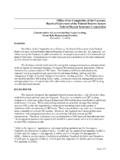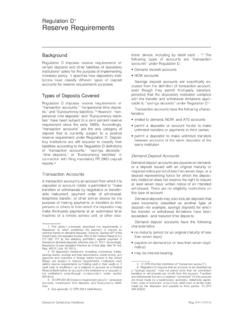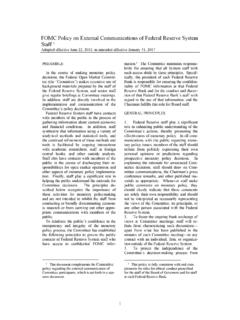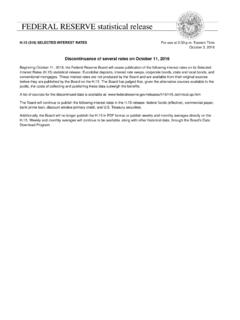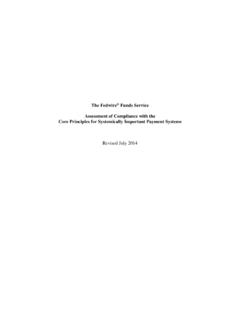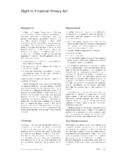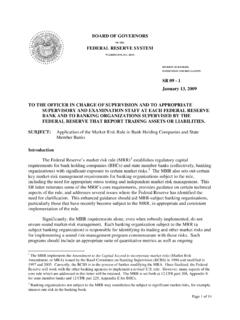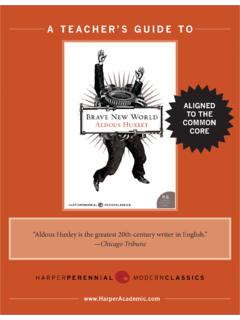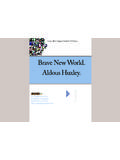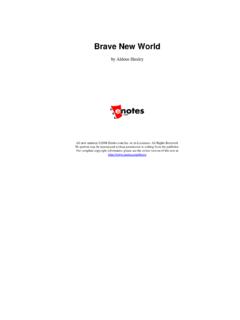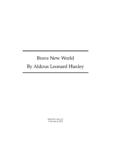Transcription of Capital Flows to Emerging Market Economies: A …
1 Board of Governors of the federal reserve system International Finance Discussion Papers Number 1081 June 2013 Capital Flows to Emerging Market economies : A brave New world ? Shaghil Ahmed Andrei Zlate NOTE: International Finance Discussion Papers are preliminary materials circulated to stimulate discussion and critical comment. References to International Finance Discussion Papers (other than an acknowledgment that the writer has had access to unpublished material) should be cleared with the author or authors. Recent IFDPs are available on the Web at This paper can be downloaded without charge from the Social Science Research Network electronic library at Capital Flows to Emerging MarketEconomies: A brave New world ? Shaghil AhmedAndrei ZlateBoard of Governors of the federal reserve SystemJune 2013 AbstractWe examine the determinants of net private Capital in ows to Emerging marketeconomies.
2 These in ows are computed from quarterly balance-of-payments data from2002:Q1 to 2012:Q2. Our main ndings are: First, growth and interest rate di erentialsbetween EMEs and advanced economies and global risk appetite are statistically andeconomically important determinants of net private Capital in ows. Second, there havebeen signi cant changes in the behavior of net in ows from the period before the recentglobal nancial crisis to the post-crisis period, especially for portfolio in ows, partlyexplained by the greater sensitivity of such ows to interest rate di erentials and riskaversion. Third, Capital control measures introduced in recent years do appear to havediscouraged both total and portfolio in ows. Fourth, in the pre-crisis period, there issome evidence that greater foreign exchange intervention to curb currency appreciationpressures brought more Capital in ows down the line, but we cannot identify such ane ect in the post-crisis period.
3 Finally, we do not nd statistically signi cant positivee ects of unconventional monetary expansion on total net EME in ows, althoughthere does seem to be a change in composition toward portfolio ows. Even for portfolio ows, unconventional policy is only one among several important classi cation: F3, words: Emerging Market economies , Capital ows, Capital controls, foreignexchange intervention, unconventional monetary policy. Shaghil Ahmed is an Assistant Director and Andrei Zlate is an Economist in the International Finance Division of the Board of Governors ofthe federal reserve system , Washington, DC 20551. We would like to thank Joseph Byrne, Neil Erics-son, Steven Kamin, Patrice Robitaille, Frank Warnock, and participants at the fourth BIS-CCA researchconference held at the Central Bank of Chile for their very helpful comments, as well as Andrew Brooks,Quoctrung Bui, and Zina Saijid for excellent research assistance.
4 We are immensely grateful to Matt Malloyfor providing his foreign exchange intervention data to us. The views in this paper are solely the responsi-bility of the authors and should not be interpreted as representing the views of the Board of Governors ofthe federal reserve system or any other person associated with the federal reserve IntroductionAccording to economic theory, free movement of Capital across national borders is bene cialto all countries, as it leads to an e cient allocation of resources that raises productivity andeconomic growth everywhere. In practice, however, as now appears to be well recognized,large Capital ows can also create substantial challenges for policymakers. These challengeshave recently come to the forefront again for Emerging Market economies (EMEs). Aftertanking during the global nancial crisis of 2008-09, net private Capital ows to EMEssurged in the aftermath of the crisis and have been volatile since then, raising a number ofconcerns in recipient the extent that the volatility is driven by the cklenessof international investors, it creates a risk of nancial instability.
5 Large in ows can also makemore di cult the pursuit of appropriate macroeconomic policies to maintain solid economicgrowth without rising in ation. If, in response, authorities raise policy rates while allowingtheir currencies to appreciate, this leads to a loss of international competitiveness whichcould hurt export and growth performance. But if they slow the pace of monetary tighteningto deter in ows, or if they resist currency appreciation pressures through intervention, theability to follow appropriate independent monetary policies is compromised. Such a courseof action could result in excessive liquidity and economic overheating, creating vulnerabilityto boom-bust cycles. And nally, if they resort to Capital controls, not only is it an openquestion how e ective these may prove based on the past historical experience, but the use ofsuch controls also risks creating economic distortions that could weigh on economic activityover the longer appear to have employed a mix of policy responses to try and address these con-cerns.
6 In response to the sharp rebound in Capital ows after the global nancial crisis,policymakers allowed some currency appreciation but also intervened in foreign exchangemarkets to partially stem currency appreciation pressures; several of them introduced somecapital controls and macroprudential measures; and they eased somewhat on policy rateincreases needed to stabilize their economies . With advanced economies providing power-ful monetary stimulus to revive their sluggish economies and the EMEs facing a plethoraof Capital in ows amid strong recoveries, policy tensions arose between these two groupsof economies . Several EMEs argued that the advanced-economy policies, including uncon-ventional monetary expansion in the United States through large-scale asset purchases, were1 This paper, and the related literature we discuss, deals with private Capital ows to EMEs. Even withstrong private net Capital in ows into EMEs in the pre- and post-global nancial crisis periods, it is worthnoting that total Capital has own "uphill" from the EMEs to the advanced economies because out owsthrough o cial channels (reserves accumulation) have been bigger.
7 The role the in ux of total Capital intothe United States played in lowering long-term yields in the runup to the global crisis has also been animportant subject of discussion. See, for example, Bernanke (2005, 2007) and Bernanke et al. (2011).1primarily responsible for the excessive ows of Capital to their economies and creating adversespillover e light of these developments, concerns and policy tensions, our paper considers a numberof important questions related to the behavior of private Capital ows to EMEs in recentyears and the policy responses they have triggered in the recipient economies : (1) Whatare the main drivers of private Capital ows into EMEs? (2) Has there been a sea-changein their behavior from before the global nancial crisis to after? (3) Have the latest roundof Capital control measures introduced in several EMEs since the crisis proved e ective inslowing down these in ows?
8 (4) To what extent are Capital in ows into EMEs exacerbatedin the rst place by policies that allow only limited exibility of the exchange rate? (5) Howmuch has unconventional monetary policy easing in the United States spurred Capital owsinto EMEs? Despite a substantial amount of recent work on aspects of these issues, theanswers to these questions are not settled. Our paper attempts to shed some further answer to the rst question would seem to be crucial in informing the debate aboutthe appropriate policy responses to Capital in ows by EMEs. It would be particularly relevantwhether such in ows were primarily a result of factors such as international investors riskappetite, or of economic fundamentals of the recipient countries, including their existing literature does not generally favor one determinant over another. Amongthe more recent studies, Byrne and Fiess (2011) nd interest rates to be a crucialdeterminant of at least the common component of global Capital ows to ,using a panel-data approach, IMF (2011a) nds loose policy in the advanced economies to bean important determinant, but so also are the improved fundamentals and growth prospectsof EMEs.
9 Ghosh et al. (2012) identify episodes of Capital in ow surges and nd a variety offactors to be important in increasing the likelihood of a surge to EMEs, including lower rates, greater global risk appetite, and a particular EME s own attractiveness as aninvestment on e ects of federal reserve balance sheet changes on net ows to Emerging Market -dedicated funds, Fratzscher et al. (2012) nd that unconventionalmonetary policies in the United States have exerted sizable e ects on net in ows. Butthey also conclude that the e ects of unconventional policies have been relatively smallcompared to other factors. On the other hand, Forbes and Warnock (2012), focusing on2 There is an earlier literature focusing on heavy Capital in ows to EMEs in the late 1980s and early , for example, Calvo, Leiderman, and Reinhart (1996), who found cyclical movements in world interestrates to be important. See also Taylor and Sarno (1997) who focused on the determinants of large portfolio ows from the United States to Latin America and Asia and found global and country-speci c factors to beequally , also, IMF (2011b).
10 2gross ows, nd no signi cant role for changes in global interest rates or in global liquidity(as measured by the money supplies of key advanced economies ) in a ecting surges or stopsof foreign in ows; however, like other studies, they do nd global risk aversion to be animportant and robust factor. Their results, though, are not purely for ows to EMEs, butfocus on cross-border in ows into a large sample of countries that includes both advancedand Emerging economies . Consistent with the general ndings in the literature, our resultsalso point to several factors being important in driving EME Capital in ows, namely growthand policy rate di erentials as well as global risk appetite. Given this, one contributionof our work is to try to gauge the importance of the di erent factors for the variability ofcapital in to the e ectiveness of Capital controls, results based on the historical experienceprior to 2009 generally suggest that Capital controls have been more successful in altering thecomposition of ows to a country than in changing the aggregate volume, except perhaps inthe very short run.
